Realtime React Chart Performance Demo
Demonstrates appending millions of points to a line chart with SciChart.js, High Performance JavaScript Charts
drawExample.ts
index.tsx
RandomWalkGenerator.ts
theme.ts
1import { appTheme } from "../../../theme";
2import { RandomWalkGenerator } from "../../../ExampleData/RandomWalkGenerator";
3
4import {
5 EAutoRange,
6 EDragMode,
7 FastLineRenderableSeries,
8 MouseWheelZoomModifier,
9 NumericAxis,
10 RubberBandXyZoomModifier,
11 SciChartSurface,
12 XAxisDragModifier,
13 XyDataSeries,
14 YAxisDragModifier,
15 ZoomExtentsModifier,
16} from "scichart";
17
18export const drawExample = async (rootElement: string | HTMLDivElement) => {
19 // Define some constants
20 const numberOfPointsPerTimerTick = 1000; // 1,000 points every timer tick
21 const timerInterval = 10; // timer tick every 10 milliseconds
22 const maxPoints = 1e6; // max points for a single series before the demo stops
23
24 // Create a SciChartSurface
25 // Note create() uses shared WebGL canvas, createSingle() uses one WebGL per chart
26 // createSingle() = faster performance as doesn't require a copy-op, but limited by max-contexts in browser
27 const { wasmContext, sciChartSurface } = await SciChartSurface.createSingle(rootElement, {
28 theme: appTheme.SciChartJsTheme,
29 });
30
31 // Create an XAxis and YAxis with autoRange=Always
32 const xAxis = new NumericAxis(wasmContext, { autoRange: EAutoRange.Always });
33 sciChartSurface.xAxes.add(xAxis);
34 const yAxis = new NumericAxis(wasmContext, { autoRange: EAutoRange.Always });
35 sciChartSurface.yAxes.add(yAxis);
36
37 // Create some DataSeries
38 const dataSeries: XyDataSeries[] = [
39 new XyDataSeries(wasmContext, { containsNaN: false, isSorted: true }),
40 new XyDataSeries(wasmContext, { containsNaN: false, isSorted: true }),
41 new XyDataSeries(wasmContext, { containsNaN: false, isSorted: true }),
42 ];
43
44 const seriesColors = [appTheme.VividSkyBlue, appTheme.VividOrange, appTheme.VividPink];
45
46 // Create some FastLineRenderableSeries bound to each dataSeries and add to the chart
47 dataSeries.map((ds, index) => {
48 sciChartSurface.renderableSeries.add(
49 new FastLineRenderableSeries(wasmContext, {
50 dataSeries: ds,
51 strokeThickness: 2,
52 stroke: seriesColors[index],
53 })
54 );
55 });
56
57 // Add some interactivity modifiers. These are only operational when the demo is paused
58 // as interactivity conflicts with AutoRange.Always
59 sciChartSurface.chartModifiers.add(
60 new RubberBandXyZoomModifier(),
61 new MouseWheelZoomModifier(),
62 new XAxisDragModifier({ dragMode: EDragMode.Panning }),
63 new YAxisDragModifier({ dragMode: EDragMode.Panning }),
64 new ZoomExtentsModifier()
65 );
66
67 // This class generates some data for our example
68 // It generates a random walk, which is a line which increases or decreases by a random value
69 // each data-point
70 const randomWalkGenerators = [1, 2, 3].map((_) => {
71 return new RandomWalkGenerator(0);
72 });
73
74 let timerId: NodeJS.Timeout;
75
76 // Function called when the user clicks stopUpdate button
77 const stopUpdate = () => {
78 clearTimeout(timerId);
79 timerId = undefined;
80 randomWalkGenerators.forEach((rw) => rw.reset());
81 // Disable autoranging on X when the demo is paused. This allows zooming and panning
82 xAxis.autoRange = EAutoRange.Once;
83 };
84
85 // Function called when the user clicks startUpdate button
86 const startUpdate = () => {
87 // // tslint:disable-next-line:no-debugger
88 // debugger;
89 if (timerId) {
90 stopUpdate();
91 }
92 const updateFunc = () => {
93 if (dataSeries[0].count() >= maxPoints) {
94 stopUpdate();
95 return;
96 }
97
98 randomWalkGenerators.forEach((randomWalk, index) => {
99 // Get the next N random walk x,y values
100 const { xValues, yValues } = randomWalk.getRandomWalkSeries(numberOfPointsPerTimerTick);
101
102 // Append these to the dataSeries. This will cause the chart to redraw
103 dataSeries[index].appendRange(xValues, yValues);
104 });
105
106 timerId = setTimeout(updateFunc, timerInterval);
107 };
108
109 // Enable autoranging on X when running the demo
110 xAxis.autoRange = EAutoRange.Always;
111
112 dataSeries.forEach((ds) => ds.clear());
113
114 timerId = setTimeout(updateFunc, timerInterval);
115 };
116
117 type TRenderStats = { numberPoints: number; fps: number };
118 type TOnRenderStatsChangeCallback = (stats: TRenderStats) => void;
119
120 let statsCallback: TOnRenderStatsChangeCallback = () => {};
121 const setStatsChangedCallback = (callback: TOnRenderStatsChangeCallback) => {
122 statsCallback = callback;
123 };
124
125 let lastRendered = Date.now();
126 sciChartSurface.rendered.subscribe(() => {
127 const currentTime = Date.now();
128 const timeDiffSeconds = new Date(currentTime - lastRendered).getTime() / 1000;
129 lastRendered = currentTime;
130 const fps = 1 / timeDiffSeconds;
131 const renderStats = {
132 numberPoints:
133 sciChartSurface.renderableSeries.size() * sciChartSurface.renderableSeries.get(0).dataSeries.count(),
134 fps,
135 };
136
137 statsCallback(renderStats);
138 });
139
140 return { wasmContext, sciChartSurface, controls: { startUpdate, stopUpdate, setStatsChangedCallback } };
141};
142See Also: Performance Demos & Showcases (11 Demos)
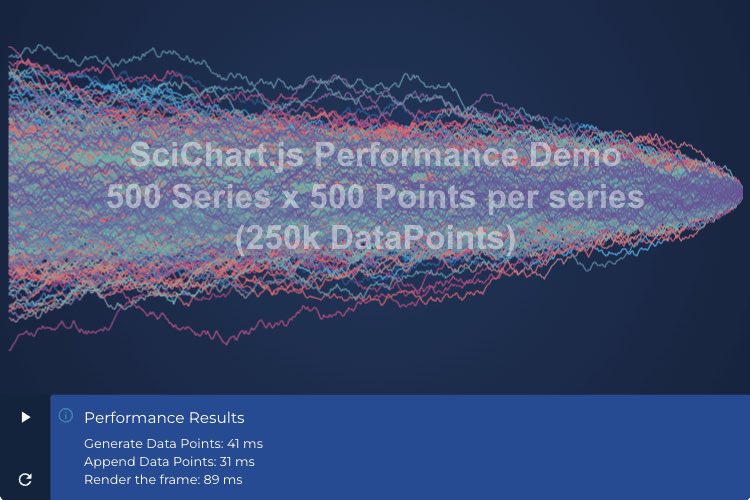
Load 500 Series x 500 Points Performance Demo
This demo showcases the incredible performance of our React Chart by loading 500 series with 500 points (250k points) instantly!
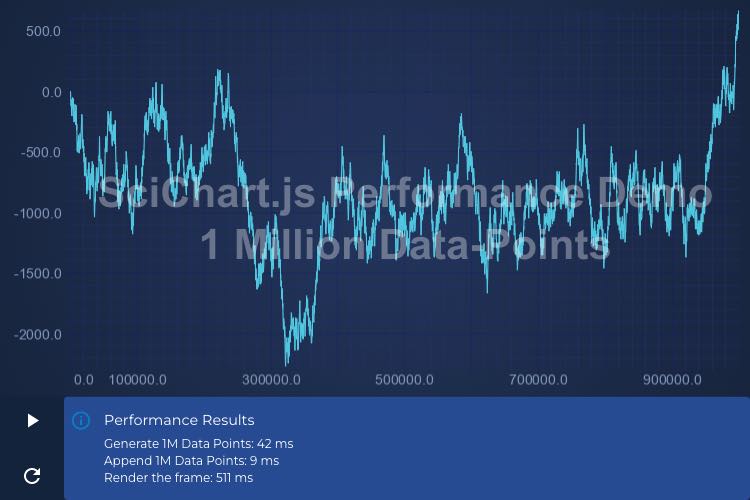
Load 1 Million Points Performance Demo
This demo showcases the incredible performance of our JavaScript Chart by loading a million points instantly.
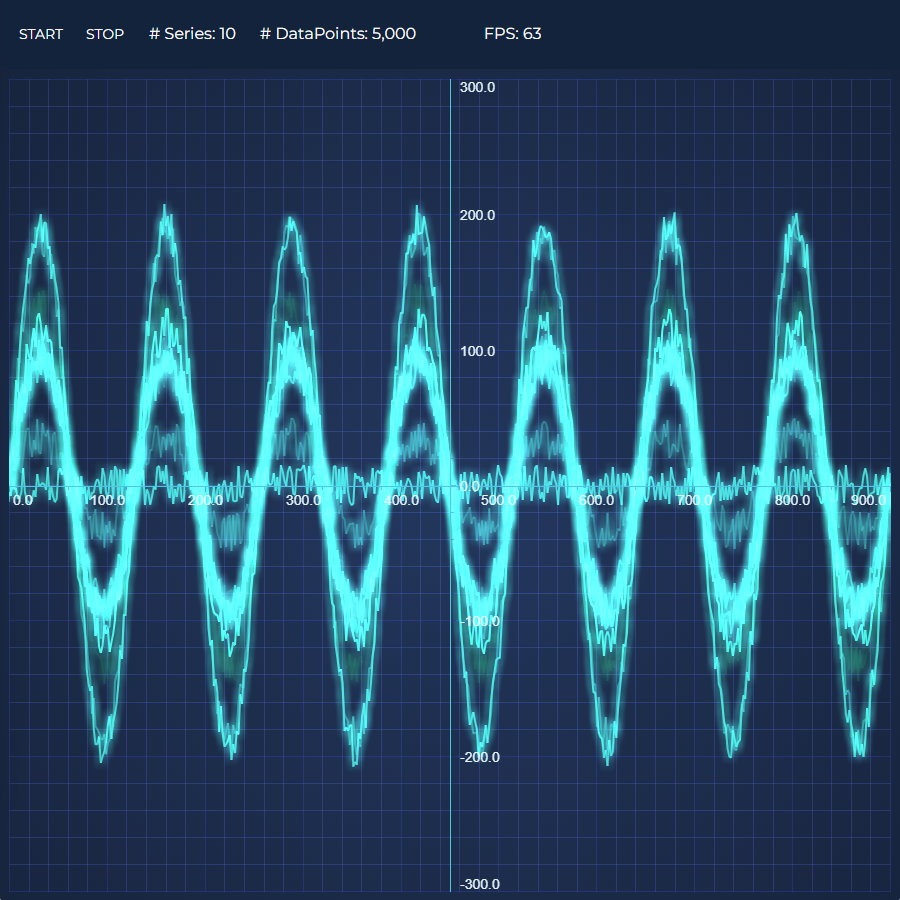
Realtime Ghosted Traces
This demo showcases the realtime performance of our React Chart by animating several series with thousands of data-points at 60 FPS

Realtime Audio Analyzer Demo
Demonstrating the capability of SciChart.js to create a JavaScript Audio Analyzer and visualize the Fourier-Transform of an audio waveform in realtime.
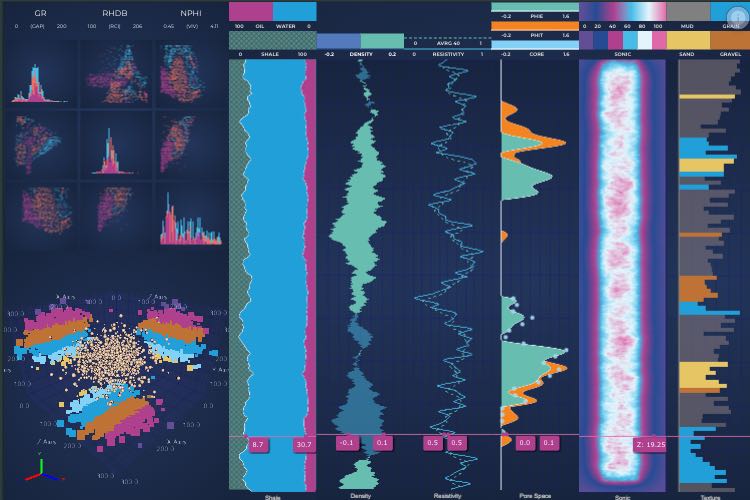
Oil & Gas Explorer React Dashboard
Demonstrates how to create Oil and Gas Dashboard
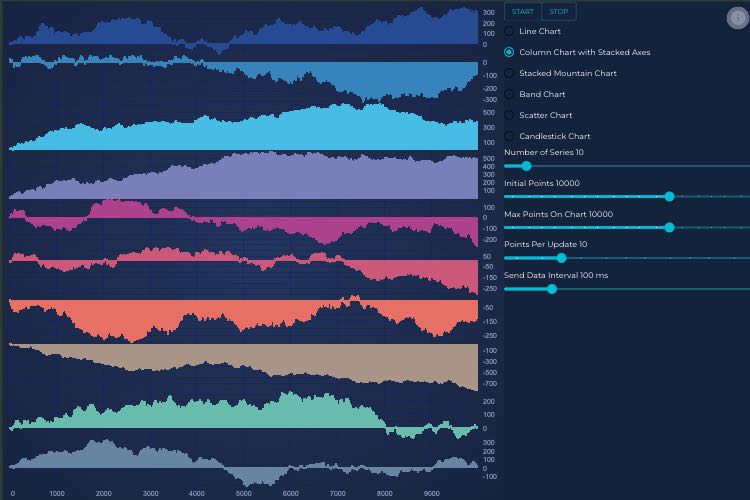
Client/Server Websocket Data Streaming
This demo showcases the incredible realtime performance of our JavaScript charts by updating the series with millions of data-points!
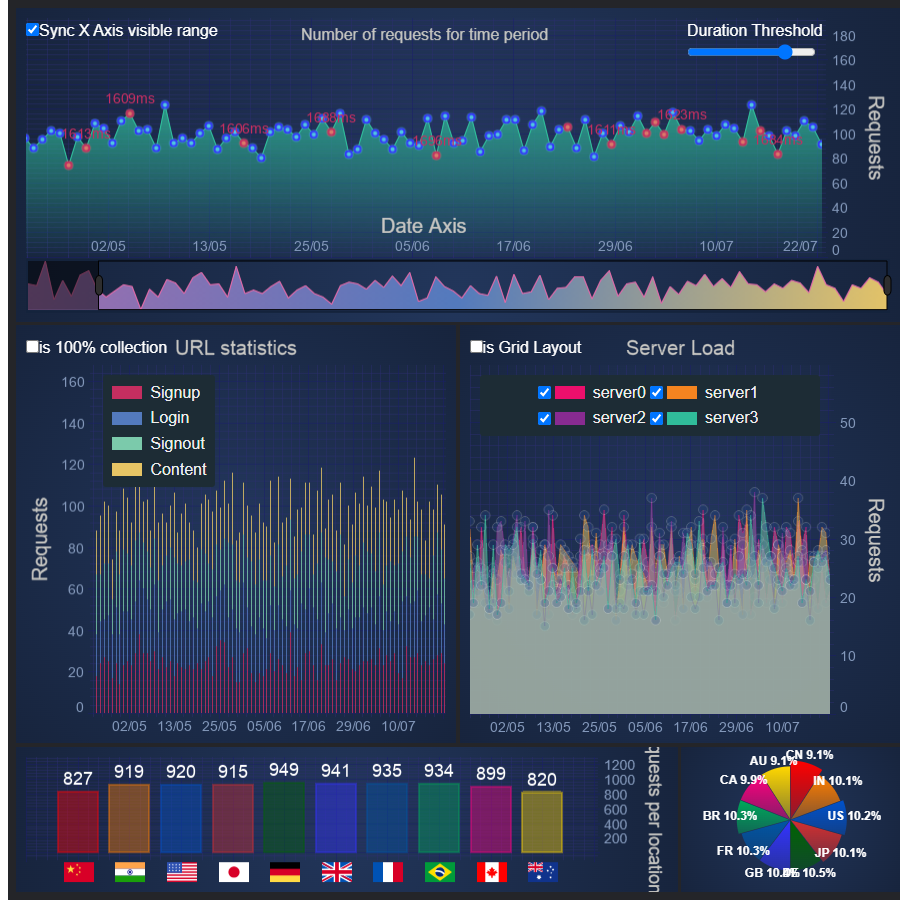
Server Traffic Dashboard
This dashboard demo showcases the incredible realtime performance of our React charts by updating the series with millions of data-points!
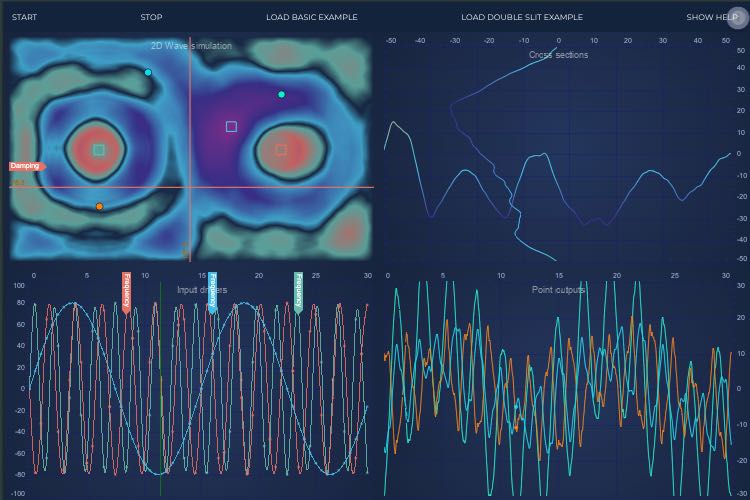
Rich Interactions Showcase
This demo showcases the incredible realtime performance of our React charts by updating the series with millions of data-points!
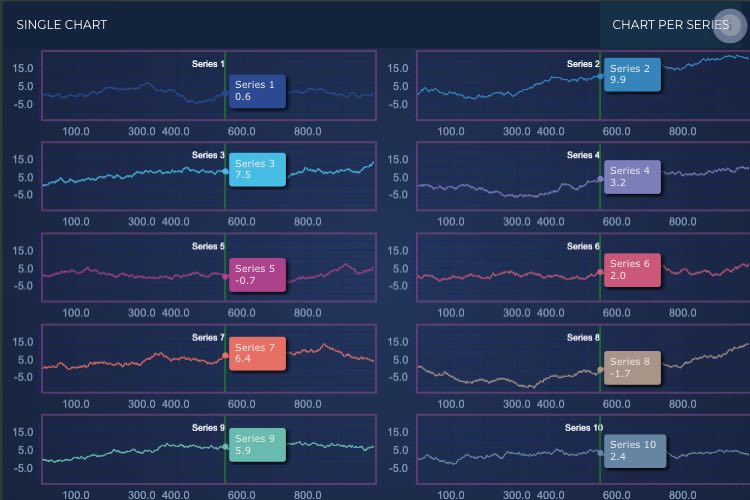
Dynamic Layout Showcase
Demonstrates a custom modifier which can convert from single chart to grid layout and back.
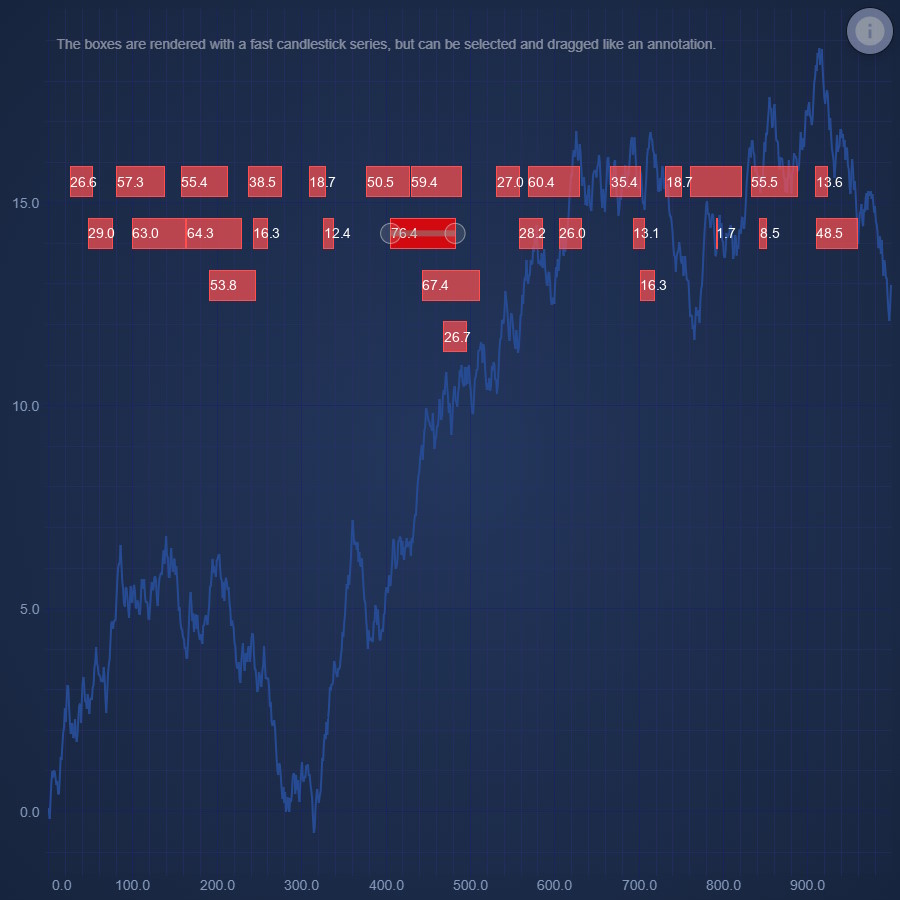
Dragabble Event Markers
Demonstrates how to repurpose a Candlestick Series into dragabble, labled, event markers
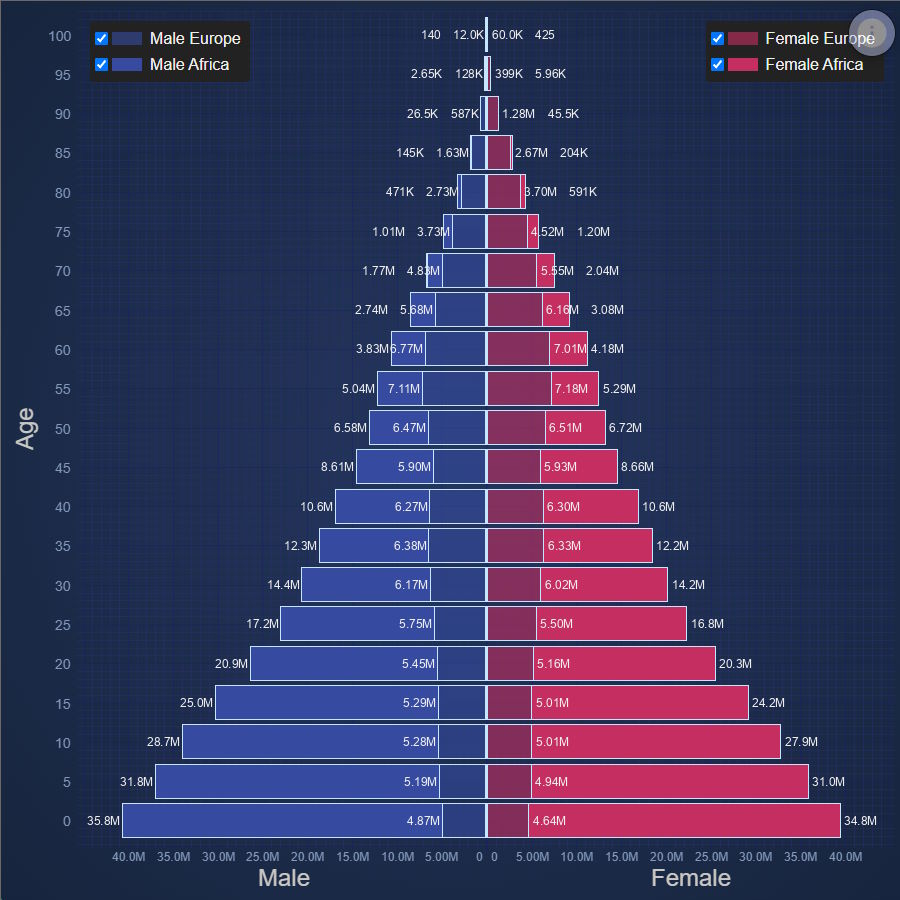
React Population Pyramid
Population Pyramid of Europe and Africa